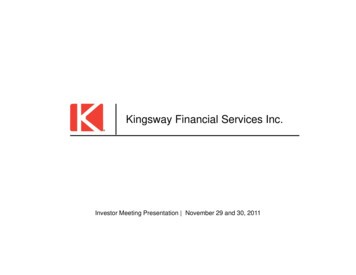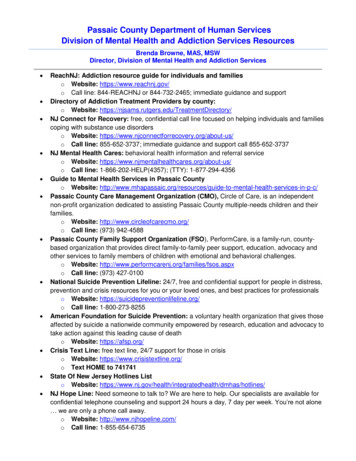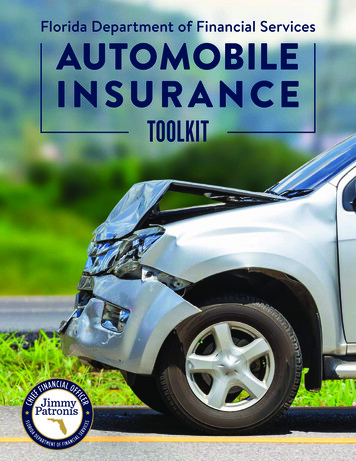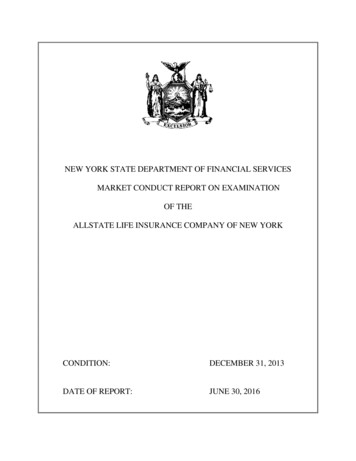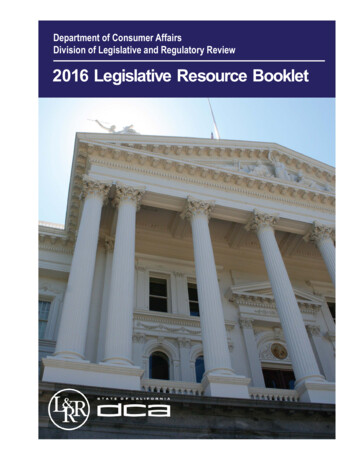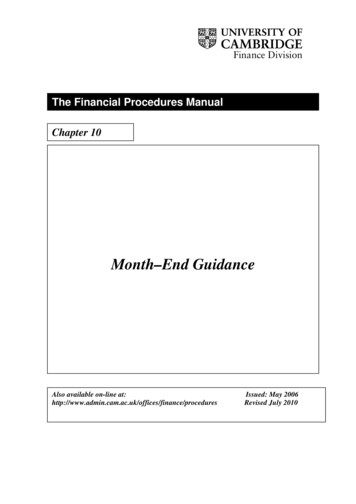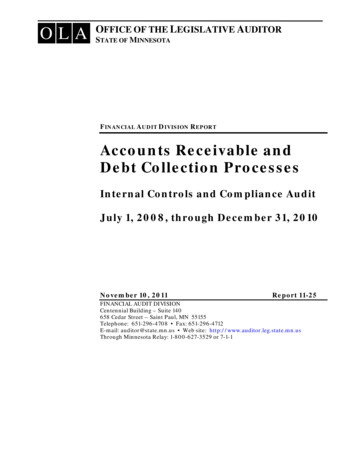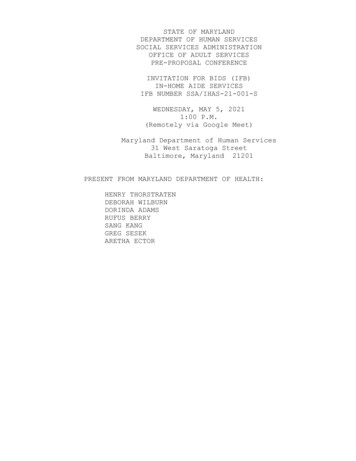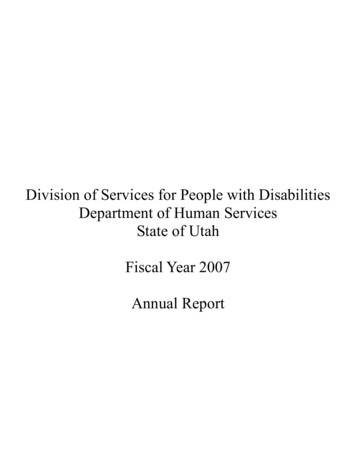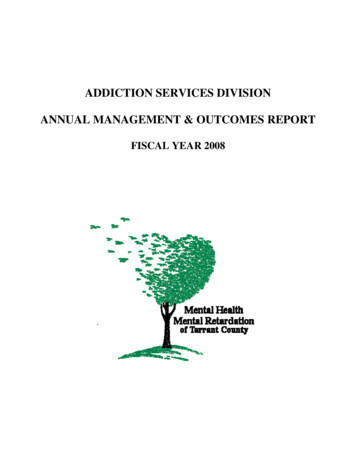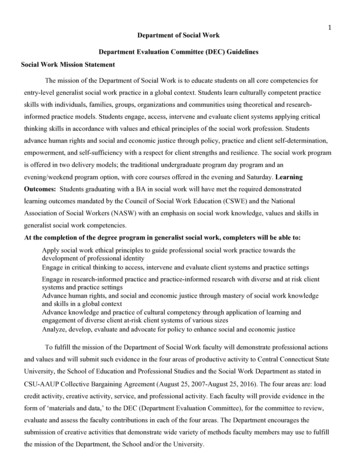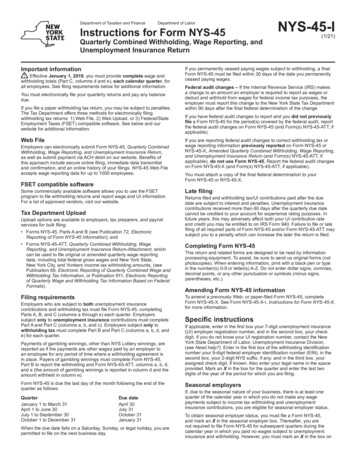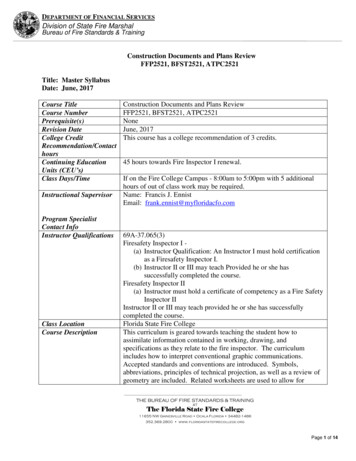
Transcription
DEPARTMENT OF FINANCIAL SERVICESDivision of State Fire MarshalBureau of Fire Standards & TrainingConstruction Documents and Plans ReviewFFP2521, BFST2521, ATPC2521Title: Master SyllabusDate: June, 2017Course TitleCourse NumberPrerequisite(s)Revision DateCollege CreditRecommendation/ContacthoursContinuing EducationUnits (CEU’s)Class Days/TimeInstructional SupervisorProgram SpecialistContact InfoInstructor QualificationsClass LocationCourse DescriptionConstruction Documents and Plans ReviewFFP2521, BFST2521, ATPC2521NoneJune, 2017This course has a college recommendation of 3 credits.45 hours towards Fire Inspector I renewal.If on the Fire College Campus - 8:00am to 5:00pm with 5 additionalhours of out of class work may be required.Name: Francis J. EnnistEmail: ty Inspector I (a) Instructor Qualification: An Instructor I must hold certificationas a Firesafety Inspector I.(b) Instructor II or III may teach Provided he or she hassuccessfully completed the course.Firesafety Inspector II(a) Instructor must hold a certificate of competency as a Fire SafetyInspector IIInstructor II or III may teach provided he or she has successfullycompleted the course.Florida State Fire CollegeThis curriculum is geared towards teaching the student how toassimilate information contained in working, drawing, andspecifications as they relate to the fire inspector. The curriculumincludes how to interpret conventional graphic communications.Accepted standards and conventions are introduced. Symbols,abbreviations, principles of technical projection, as well as a review ofgeometry are included. Related worksheets are used to allow forTHE BUREAU OF FIRE STANDARDS & TRAININGATThe Florida State Fire College11655 NW Gainesville Road Ocala Florida 34482-1486352.369.2800 www.floridastatefirecollege.orgPage 1 of 14
Student LearningOutcomesTextbook used by BFSTRequired MaterialsMethod of InstructionGradingCertification(s)applied experience of finding and interpreting information fromauthentic drawings.After the successful completion of this course, the student will be ableto do the following:1. Explain the roles of the fire plans examiner in relation to thepermitting,design, and construction processes.2. Describe the processes for submitting and reviewing plans.3. Identify standards and codes that are applicable to the plans reviewprocess.4. Identify purpose of construction plans, analytical process, andsymbols used.5. Describe what a plans examiner should look for when reviewingsite, plot, utility, and landscape plans.6. Describe what a plans examiner should look for when reviewingarchitectural plans.7. Describe what a plans examiner should look for when reviewingstructural plans.8. Describe what a plans examiner should look for when reviewingmechanical plans.9. Describe what a plans examiner should look for when reviewingelectrical plans.10. Describe what a plans examiner should look for when reviewingfire protection system plans.11. Describe what a plans examiner should look for when reviewingother fire protection related system plans in relation to hazardousmaterials.12. Explain performance based design process.13. Describe the reasons why buildings are renovated and remodeled tobe alert to modifications to existing fire protection features.14. Explain the importance of the Technical Advisory Committee andstakeholders meeting prior to submittal of building applicationand plans15. Understand how to report substandard plans to the State.Plans Examiner for Fire and Emergency Services, 2nd Edition (2016)Fire Protection Publications (IFSTA)ISBN: 978-087939608-4Students must bring an architectural ruler.ClassroomPassing 70% (Quizzes 30% Final 50% Presentation 20%)One of the five required courses for Firesafety Inspector I certificationFFP1510, BFST1510, or ATPC1510CODES AND STANDARDSTHE BUREAU OF FIRE STANDARDS & TRAININGATThe Florida State Fire College11655 NW Gainesville Road Ocala Florida 34482-1486352.369.2800 www.floridastatefirecollege.orgPage 2 of 14
FFP2120, BFST2120, or ATPC1510FFP2521, BFST2521 or ATPC2521FFP1505, BFST1505 or ATPC1505FFP1540, BFST1540 or ATPC1540Attendance PolicyAcademic IntegrityBUILDING CONSTRUCTION FOR THESERVICECONSTRUCTION DOCUMENTS AND PREVIEWFIRE PREVENTION PRACTICESPRIVATE FIRE PROTECTION SYSTEMOne of five required for Fire Officer IFFP2120,BFST2120 or ATPCBUILDING CONSTRUCTION2120FOR THEFIRE SERVICEFFP2720, BFST2720, orCOMPANY OFFICERATPC2720RN4807COURAGE TO BE SAFEFFP1740, BFST1740, orFIRE SERVICE COURSEATPC1740DELIVERYFFP1810,BFST1810, orFIREFIGHTING TACTICS ANDATPC1810STRATEGIES IYou are required to attend all sessions of the course and complete allpre-course assignments. Failure to appear in class for a scheduledactivity will be considered an absence. Students are allowed to miss10% of the class and still receive credit. There are no makeup sessions.Academic integrity is crucial to the learning community and indicatesrespect for the college, the instructor, the course, your classmates, andyourself. Any violation of this trust, including but not limited tocheating, plagiarism, collusion, or using or having any content of anun-administered test, will result in immediate dismissal from thecourse. Under Florida Statute 633, any student dismissed for academicdishonesty can be refused acceptance for any course administered byFSFC.TrainingYou must be certified by the State of Florida as anProviderInstructor I, II, or III, or a State of Florida recognized FireMessage Department, or hold a certification as a Single CourseExemption Instructor. Applications can be made throughthe Bureau of Fire Standards and Training. OrganizationProviders are Schools, Government Entities, andBusinesses that need to apply and be approved by theFlorida State Fire College.Instructor An instructor providing training must be qualified by theMessage Bureau of Fire Standards and Training or instructors withrequisite faculty credentials for the academic institutionTHE BUREAU OF FIRE STANDARDS & TRAININGATThe Florida State Fire College11655 NW Gainesville Road Ocala Florida 34482-1486352.369.2800 www.floridastatefirecollege.orgPage 3 of 14
that is registered in the Florida Department of EducationStatewide Course Numbering System to teach the courseor instructors with requisite faculty credentials asdetermined by the United States Fire AdministrationNational Fire Academy or instructors with requisitefaculty credentials as determined by the respectiveregionally accredited or nationally accredited university orcollege or instructors who hold an active Single CourseExemption Certification issued by the Division.Instructors who hold an active Fire Officer II Certificationissued by the Division after November 18, 2013, and anactive Instructor II Certification issued by the Division.Instructors who hold an active Firesafety Inspector I,Firesafety Inspector II or Fire Code AdministratorCertification issued by the Division and an Instructor IICertification issued by the Division may teach the"Building Construction for the Fire Service."PreTo qualify for certification as a Fire Officer I, you shallCertificatio possess an active Firefighter Certificate of Compliancen Message issued by the Division or have met the curriculumrequirements for Volunteer Firefighter I as defined in69A-37.055(1) F.A.C., Meet the job performancerequirements of NFPA 1021 - Fire Officer I (2009).,Complete the Fire Officer I curriculum., Complete theFire Officer I Task Book with required signatures. Theevaluator of the FO1 task book is a direct supervisor,training officer or person designated by the Fire Chief orAgency Head who is responsible for overseeing theperformance or activity of the candidate. It is thecandidate’s responsibility to verify that the evaluator signsand enters their Florida Instructor ID number attesting tofirst hand observation of the requisite skills after theyhave observed the demonstration of the task bookperformance requirements, Pass the Fire Officer I examwith a score of 70% or higher., Complete the NationalFallen Firefighters Foundation course titled "Courage tobe Safe" or a course determined by the Division to beequivalent. When taking a state exam, please ensure thatyour personal profile matches the identification that youplan to produce at PearsonVue.To be certified as a Firesafety Inspector I in the State ofFlorida, an individual must; never have been convicted ofTHE BUREAU OF FIRE STANDARDS & TRAININGATThe Florida State Fire College11655 NW Gainesville Road Ocala Florida 34482-1486352.369.2800 www.floridastatefirecollege.orgPage 4 of 14
felony, successfully complete 200 hours of basiccertification training for Firesafety inspectors, or havereceived equivalent training in another state, and pass astate written examination. To apply for this certification,login as a student, click on Apply, select certificationexam and follow the process to submission. Supportingdocumentation may be scanned and attached or faxed to352-732-1374. When faxing, note "on-line application" onthe fax along with a contact phone number. You will needto have your fingerprints digitally taken and submitted.Directions on how to do this are on the home page.NOTE*** WHEN YOU ARE APPROVED TO TEST ORIF ADDITIONAL INFORMATION IS REQUIRED, AMESSAGE WILL BE SENT TO YOUR INBOX.PLEASE CHECK YOUR INBOX ON A REGULARBASIS.FIRE OFFICER I and FIRESAFETY INSPECTOR IStudents with DisabilitiesEmergency EvacuationPolicyRequesting EmergencyCareNFPASubjectand LevelAny student who has a permanent or temporary disability that mayrequire a reasonable accommodation to participate in the course mustpresent documentation of the disability and requested accommodationno later than the beginning of the course.Emergency procedures for the institution or training facility should befollowed.If on the Florida State Fire College campus, the occupants of thebuildings on campus are required to evacuate and assemble outsidewhen a fire alarm is activated or an announcement is made. Please beaware of the following policies regarding evacuation. Familiarize yourself with all exit doors of the classroom and thebuilding. Remember that the nearest exit door may not be the one youused when you entered the building. If you require assistance to evacuate, inform the instructor onthe first day of class. In the event of an evacuation, follow the guidance of theinstructor. Do not re-enter a building unless you are given instructions byFlorida State Fire College personnel to do so.Emergency procedures for the institution or training facility should befollowed.If on the Florida State Fire College campus, any request for emergencyTHE BUREAU OF FIRE STANDARDS & TRAININGATThe Florida State Fire College11655 NW Gainesville Road Ocala Florida 34482-1486352.369.2800 www.floridastatefirecollege.orgPage 5 of 14
care should be initiated by calling “911” from any phone on campus ofthe Florida State Fire College. Phones are located in each classroom.Additionally, in the event of any emergency, immediately contact aninstructor or staff member.Critical Event Procedures Emergency procedures for the institution or training facility should befollowed.If on the Florida State Fire College campus:Severe Weather – there is a lightning detection system on campuswhich has an audible 15 second blast of an air horn. If you are outside,please follow your instructor or move to the closest permanentbuilding. Once the threat is over, there will be three 5 second blasts ofthe signal.Security – During the daytime, security is handled by full time facultyand staff. There are security guards on duty in the evenings andweekends. Please comply with the requests made of security officers.Failure to do so can result in removal from campus.Enabling ObjectivesStudent Badges – You will be issued a badge to be worn anytime youare on campus.Given information from discussion and reading materials, the studentwill perform the following objectives to a written test accuracy of atleast 70% and meet the applicable job performance requirements ofNFPA 1031.Chapter 1 Role of Plans Examiner1. Describe the three components of effective fire prevention (NFPA1031: 7.3.8 and 8.3.72. Reasons for construction permits (NFPA 1031:7.2.1)3. Explain the purpose of and reasons for plans reviews (NFPA1031:7.2.1)4. Identify basic facts about passive and active fire protection systems(NFPA 1031:7.3.10, 8.3.1 and 8.3.75. Describe the design process (NFPA 1031:7.2.1 and 8.3.1)6. Explain the permitting process (NFPA 1031:7.2.17. Identify basic facts about the construction process (NFPA1031:7.2.1)8. Role of the architect, engineer, developer, and contractors.Chapter 2 Plans Review Process1. Identify basic facts about plans review organizations (NFPA1031:7.2.1)2. Identify basic facts about legal requirements for plans review(NFPATHE BUREAU OF FIRE STANDARDS & TRAININGATThe Florida State Fire College11655 NW Gainesville Road Ocala Florida 34482-1486352.369.2800 www.floridastatefirecollege.orgPage 6 of 14
1031:7.2.1 and 8.2.2)3. Describe the general plans submittal and processing process (NFPA:7.2.1, 7.2.3 and 7.3.8)4. Identify accurate information about permits and fees (NFPA 1031:7.2.1 and 7.2.3)5. Identify accurate information about submitting plans to the authorityhaving authority (AHJ) (NFPA 1031:7.2.1 and 7.3.36. List types of support documents included with building plans7. Identify basic facts about the plans review sequence (NFPA1031:7.2.1and 7.2.3)8. Explain why effective communication with design professionals isimportant to the plans examiner (NFPA 1031: 7.2.2)9. Identify basic facts about types of deficiencies that occur in plans(NFPA 1031: 7.2.2)10. Identify information a plans examiner should provide too correctdeficiencies in submitted building plans (NFPA 1031: 7.2.2)11. Explain what is meant when plans are approved by the AHJ (NFPA1031 7.2.2)12. Identify basic facts about plans revisions (NFPA 1031:7.2.2)13. Explain why record keeping for building plans and permits isimportant (NFPA 1031: 7.2.1)14. List two ways building records can be requested by outsideparties (NFPA 1031: 7.2.1)15. Describe types of legal proceedings involving the interpretation,application, or enforcement of building and fire codes (NFPA 1031:7.2.2 and 7.3.9)16. Differences between civil plans, architectural plans, engineeringplans and shopdrawings.17. FAC 61G18. Understand scope of FBC-Building, FBC – Residential and FBC –Existing Building.19. Understand how to deal with the differences between FBC andFFPCChapter 3 Codes and Standards1. Explain what is meant by the terms code and ordinance (NFPA1031:7.2.1, 7.2.2 and 7.2.4)2. Explain how a code is amended (NFPA 1031: 7.2.1, 7.2.2 and 7.2.43. Identify basic facts about prescriptive-based and performance-basedcode models (NFPA 1031: 7.2.1, 7.2.2 and 7.2.4)4. List types of specialized codes (NFPA 1031: 7.2.1, 7.2.2 and 7.2.4)THE BUREAU OF FIRE STANDARDS & TRAININGATThe Florida State Fire College11655 NW Gainesville Road Ocala Florida 34482-1486352.369.2800 www.floridastatefirecollege.orgPage 7 of 14
5. Identify basic facts about code references (NFPA 1031: 7.2.2, 7.2.4and8.2.1)6. Identify basic facts about plans review checklists (NFPA 1031:8.2.1)7. Explain what is meant by the term standard (NFPA 1031: 7.2.1, 7.2.2and 7.2.4)8. List private-sector organizations involved in developing standardsrelated to fire safety (NFPA 1031:7.2.1, 7.2.2 and 7.2.4)9. List federal agencies that have standards involving fire safety(NFPA1031:7.2.1)Chapter 4 Plan Sets1. List purposes of construction plans (NFPA 1031: 7.2.3)2. Describe the design analysis process (NFPA 1031: 7.2.3)3. Identify common abbreviations and symbols used on constructiondrawings (NFPA 1031: 7.3.1 and 7.3.6)4. Identify basic facts about measurements and scales and their use inconstruction drawings (NFPA 1031: 7.3.1 and 7.3.7)5. List the six major sections or groups of plans that compose acompleteset of plans (NFPA 1031:8.3.3)6. Identify basic facts about the parts of a typical plan sets (NFPA1031:8.3.3)7. Identify purposes of supplemental documentation that mayaccompanyplan sets (NFPA 1031: 8.3.3 and 8.3.5)Chapter 5 Site, Plot, Utility, and Landscape Plans1. Identify basic facts about reviewing site and plot plans (NFPA 1031:7.2.3)2. Describe terms related to contours and grades (NFPA 1031: 7.2.3)3. List requirements included when specifying construction of fire andemergency services access roads (NFPA 1031:7.3.7)4. List obstacles that a plans examiner should check for that mayimpedeemergency vehicle access (NFPA 1031: 7.3.7)5. Identify basic facts about easements (NFPA 1031: 7.2.1 and 7.3.7)6. Identify basic facts about reviewing utility drawing (NFPA 1031:7.3.1and 7.3.6)7. List information included on a utility drawing (NFPA 1031: 7.3.1and7.3.6)8. Identify basic facts about reviewing landscape plans (NFPA 1031:THE BUREAU OF FIRE STANDARDS & TRAININGATThe Florida State Fire College11655 NW Gainesville Road Ocala Florida 34482-1486352.369.2800 www.floridastatefirecollege.orgPage 8 of 14
7.3.7)9. List information included on a landscape plan (NFPA 1031: 7.3.7)10. Understand the Building Department has access to, and uses, AutoTurn for design information.11. Understand water supply designs for compliance with NFPA 1.12. Understand how trade0offs may be implemented if water supply isinadequate.Chapter 6 Architectural Plans1. Identify basic facts about reviewing architectural plans (NFPA 1031:7.2.3, 7.3.2, 7.3.3, 7.3.4, 7.3.5, 8.3.1 and 8.3.9)2. Identify basic facts about reviewing exterior elevation drawings(NFPA1031: 7.3.3)3. Identify basic facts about reviewing floor plans (NFPA 1031: 7.3.2,7.3.4, 7.3.5 and 8.3.9)4. Explain the value of a reflected plan (NFPA 1310: 7.3.3)5. Identify basic facts about reviewing section drawings (NFPA 1031:7.3.3)6. Explain the purpose of interior elevation drawings (NFPA 1031:7.3.3)7. Identify basic facts about schedules (NFPA 1031: 7.3.3)8. Explain the importance of furniture and equipment plans (NFPA1031:7.3.5)9. Identify basic facts about detail views (NFPA 1031: 7.3.3)Chapter 7 Structural Plans1. Identify basic facts about reviewing structural plans (NFPA 1031:7.2.3, 7.3.3, 7.3.10, and 8.3.6)2. Define the various types of loads (NFPA 1031: 7.3.7)3. Identify basic facts about dead loads and live loads (NFPA1031:7.3.3and 8.3.6)4. List examples of dead loads and live loads (NFPA 1031: 7.3.3 and8.3.6)5. Identify basic facts about wind loads (NFPA 1031:7.3.3 and 8.3.6)6. Identify basic facts about seismic loads (NFPA 1031: 7.3.3 and8.3.6)7. Describe design methods used to protect buildings against the forcesofearthquakes (NFPA 1031: 7.3.3 and 8.3.6)8. Identify basic facts about soil pressure, foundation design andfoundation plans (NFPA 1031: 7.3.3 and 8.3.6)9. Define the term bearing-wall structure and frame structure (NFPATHE BUREAU OF FIRE STANDARDS & TRAININGATThe Florida State Fire College11655 NW Gainesville Road Ocala Florida 34482-1486352.369.2800 www.floridastatefirecollege.orgPage 9 of 14
1031: 7.3.3)10. List type of structural design components (NFPA 1031: 7.3.3)11. Identify basic facts about columns and beams (NFPA 1031: 7.3.3)12. Identify basic facts about trusses (NFPA 1031:7.3.3)13. Describe arches and their uses (NFPA 1031: 7.3.3)14. Describe methods to provide lateral stability (NFPA 1031: 7.3.3)15. Describe what is shown in structural framing plans (NFPA1031:7.3.3)16. Identify basic facts about structural detail, section views, and woodconnectors (NFPA 1031:7.3.3)Chapter 8 Mechanical Plans1. Identify basic facts about reviewing mechanical plans (NFPA 1031:7.2.3, and 7.3.6)2. Identify basic facts about plumbing system plans and designs(NFPA1031: 7.3.6)3. List components of fuel gas systems (NFPA 1031: 8.3.4 and 8.3.8)4. Identify basic facts about fuel gas systems (NFPA 1031:8.3.4 and8.3.8)5. Identify basic facts about s
The Florida State Fire College 11655 NW Gainesville Road Ocala Florida 34482-1486 352.369.2800 www.floridastatefirecollege.org Page 6 of 14 care should be initiated by calling “911” from any phone on campus of the Florida
